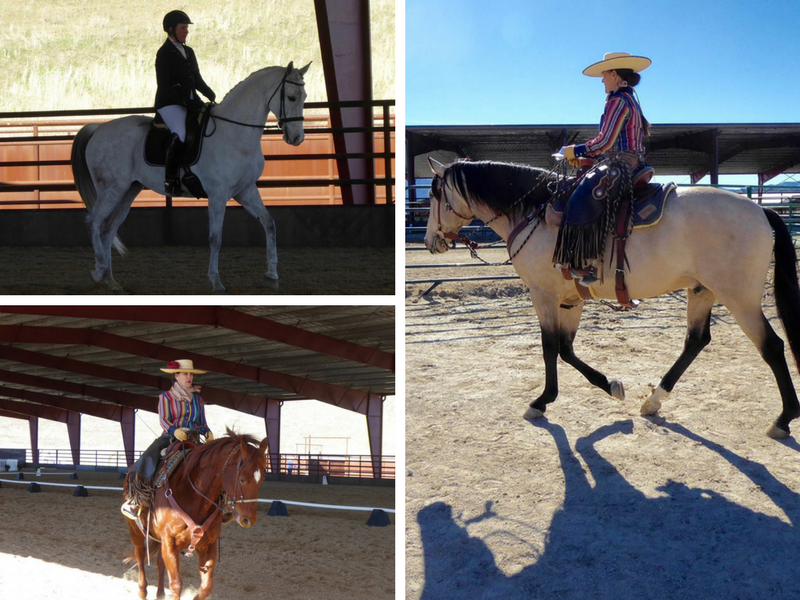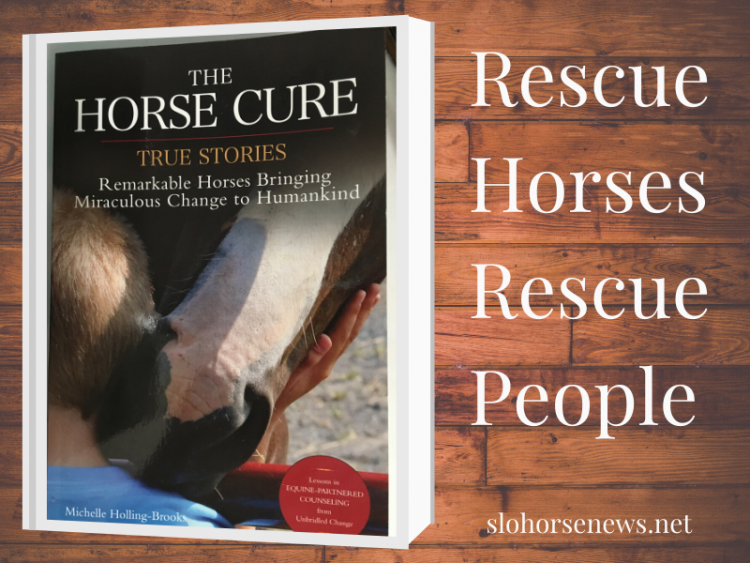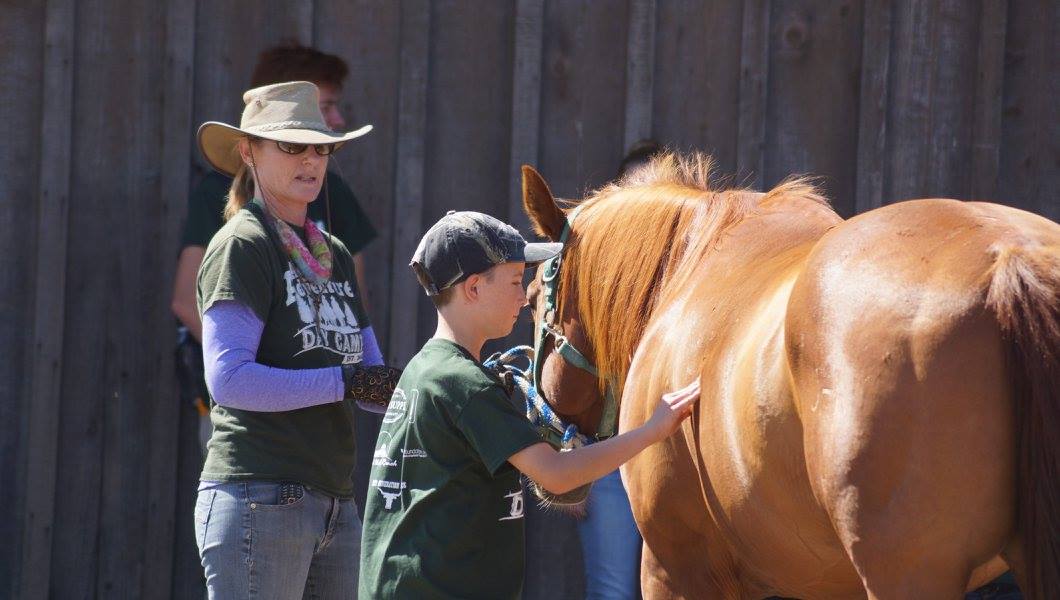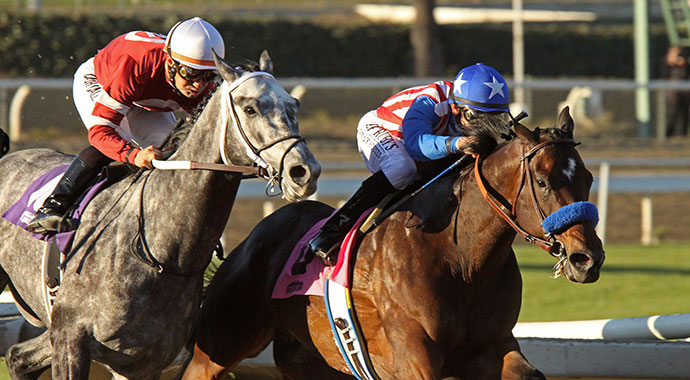Ready to try something new? Tired of simply perfecting that 20-meter circle? Are the jumps getting bigger and “badder”? Are your opportunities to work cows becoming less and less? Looking for something else to do with your equine partner that uses your current training and still provides competition? Then you should check out Working Equitation.
Working Equitation incorporates the precision and harmony of Dressage, the balance of reining and hunters, adds the thrill of speed and throws cows into the mix too!
Just like Columbus who brought us the “New World”, this up-and-coming discipline comes from Spain, Portugal, Italy and France. Working Equitation celebrates the partnership between horse and rider while focusing on classical horsemanship and using the horse for ranch work.
Working Equitation Has Three Main Components
-
- Dressage – The dressage tests are designed to test the horse and rider, as well as to serve as an aid in training. The movements at each progressive level build upon movements of the previous levels and coincide with the type and difficulty of movements expected in the Ease of Handling and Speed trials at the respective levels.
- Ease of Handling – Horse and rider negotiate a series of obstacles, receiving a 0-10 score for the quality with which they perform each one. As with the Dressage trial, the judges also award collective marks for horse’s impulsion, submission, quality of transitions, rider’s effectiveness, etc. In the Ease of Handling trial, judges are looking for a smooth, symmetrical performance, with a particular emphasis on the quality of the geometry within each of the obstacle patterns.
- Speed – Horse and rider negotiate obstacles found in the Ease of Handling phase, yet rather than being judged on the quality and smoothness of the performance, the event is timed, with the faster times placing higher.
Cows Too!
Working Equitation Team Competitions incorporate an additional component:
-
- The Cow Trial – This trial tests the ability of a horse and rider to work, individually and as a team, with cattle. The test is performed with a team of 3 or 4 riders. The objective is for each rider to individually sort and cut a pre-selected cow from the herd, and then as a team herd the selected cow into a designated pen. As a timed event, there are time penalties for course errors. Learn more about the Working Equitation Cow trial, here.
– Info gathered from WEUnited the governing body of Working Equitation in the United States.
Local Working Equitation Competitions
A Working Equitation competition was held at Pence Ranch and Vineyard in Buellton, California. Our friend Ellen Corob, a Dressage instructor from San Luis Obispo, competed with her Grand Prix Dressage mare, Deynika.
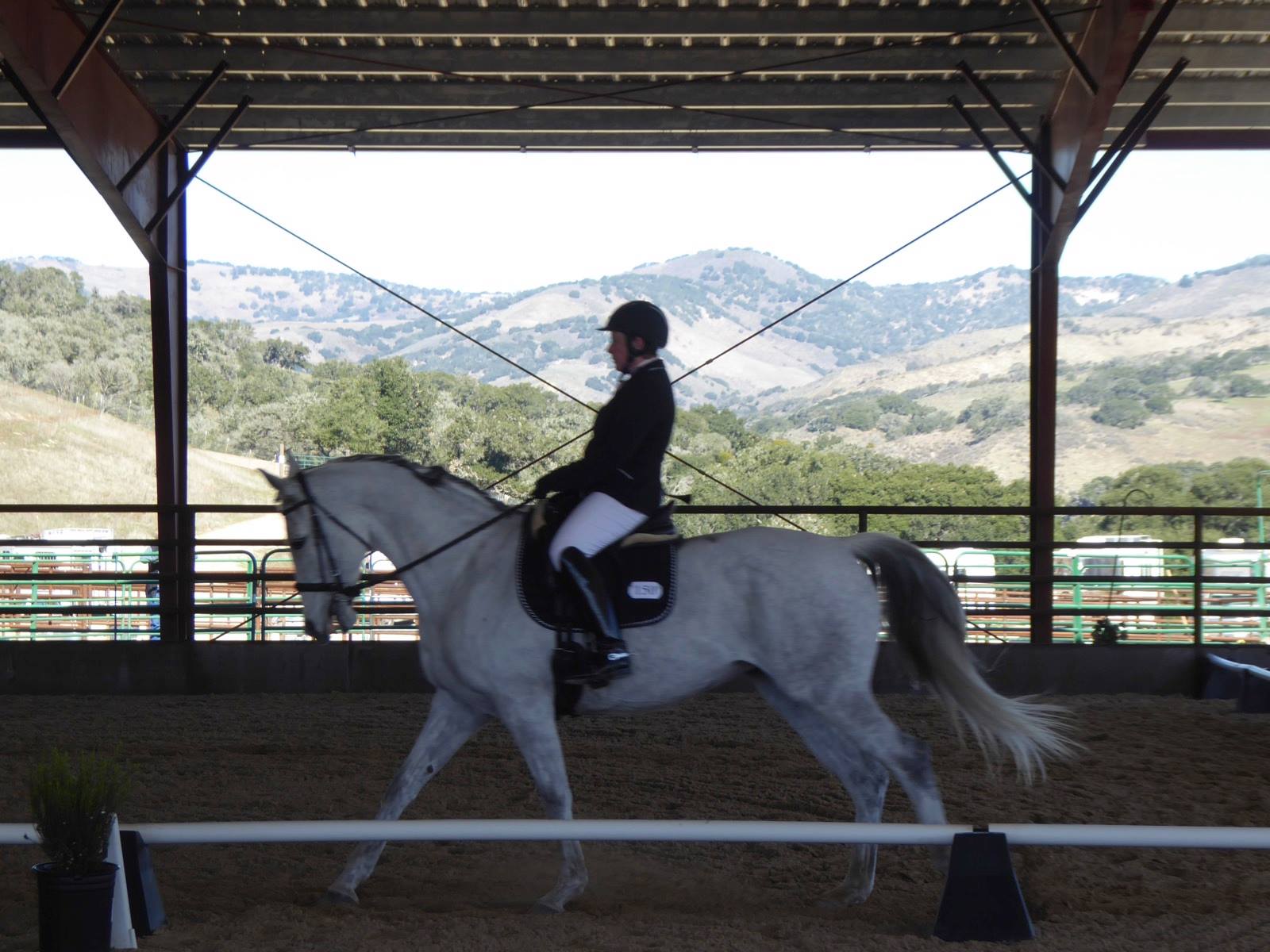
Ellen gave Working Equitation a try because, “Since I grew up riding, training, and showing western, pleasure, equitation, and trail, I thought it would be fun and a nice challenge, and something different, for my Grand Prix Dressage horse. I have had Deynika since she was born, she just turned 16, and have done all the training with her, and have always done trail obstacles, such as working a gate, side passing, going over a bridge, barrels, etc.”
First Hand Report of a Working Equitation Competition
Ride along with Ellen and Deynika as they experience their first Working Equitation competition:
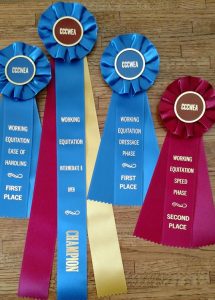
My first ride, the Dressage test, was supposed to be just after 11am. Since I was riding Dressage, Deynika had to be braided (you can show in whatever tack you usually ride in, western, hunter, dressage, and dress and turnout needs to be appropriate to that discipline). I decided to put in a French braid. So I did that, then groomed and tacked up and got on – her braid was already falling out! So I went back and put it back in the best I could. We warmed up and the braid was still falling out!!!
Oh well, we had a very nice Dressage ride, probably equivalent to about 3rd level, so not very difficult for Deynika EXCEPT the canter entry, halt, salute, AND WALK!!! That was difficult for this Dressage horse who is used to having to go and show off after the halt. Anyway, there were 2 in our division and we were first.
Then we had to wait for our first trail class, called Ease of Handling. This took a long time for everyone to go through as the lower levels were walk trot. It started to go faster with the upper levels going mostly at the trot and canter. We were still running about an hour late by the time we got to my ride. I decided to put in regular braids, and had plenty of time to do it. Deynika fell asleep and at one point her legs started to buckle and she almost fell down!!! This woke her up and scared her so she stayed awake for the last 2 braids.
This Ease of Handling class is essentially supposed to be like a hunter class, where ‘how you do it’ matters, so smooth and calm. There was a plywood BLACK BULL that had the ring on its head! That’s all she saw when we first went in! I could position the staff the way I wanted it, to be able to pick it up at a canter to spear the ring, then put the staff in the next barrel. So I got her close to the ‘bull’ a couple of times before the ride started. She did all of the obstacles very well and smoothly. Then I MISSED GETTING THE RING even though she got close enough to the ‘bull’!!! Oh well, that was the only mistake and a fairly minor one. We were also first in this phase.
Then there was a Speed Phase over some of the same obstacles. So this would be like the jumper class, where it doesn’t matter how you do it but how fast you get it done. In this phase, getting the ring takes 10 seconds off your time. I mostly did the obstacles under control and galloped between them. I forgot to position the staff the way I wanted it so had to stop to pick it up, then just trotted to get the ring, AND I GOT IT, put the staff in the barrel and kept going. The last obstacle was the jump, so I collected her for it, then GALLOPED to the finish line. IT WAS A LOT OF FUN!!! We were second in this phase as the other horse was a Quarter Horse that LIKED TO GO FAST! I don’t know the time difference but they took that phase, even with 10 seconds off my time.
We were the Intermediate B Open CHAMPIONS!!! Very happy with our first outing at Working Equitation.
Ellen has been interested in Working Equitation for several years and encourages all riders to consider it. “I basically feel that anything you can do with your horse to make it a more ‘all around’ athlete is great. This has the precision of dressage, the smooth, consistency of a hunter round with the obstacles, then the fun, basically, of the speed phase. Not all horses would like this, or do it well, but it is great for my upper level Dressage horse to know there is something else she can do.”
Many Local Equestrians Enjoy the Sport
Nicole Chastain Price managed the show in Buellton and is also quite a fan of the sport. She tells us how she got involved. “I became interested in Working Equitation in 2009 through my love of the Lusitano horse. I had a client send me one in 2007, and since that breed has held my heart. I purchased a Lusitano 2-year-old stallion in 2011 to develop as a Dressage and Working Equitation horse – a breed that comprises around 48% of WE horses Internationally. I started hosting clinics in 2011, competing in 2014 and in 2016 took over the CCCWEA- Central California Coast Working Equitation Association, which is a group dedicated to the promotion of WE in our area. It’s a fledgling group with no formal structure but I hope to grow it as we develop more interest. I am now an “r” Judge through WE United.”
All Breeds Find Working Equitation Fun and Competitive
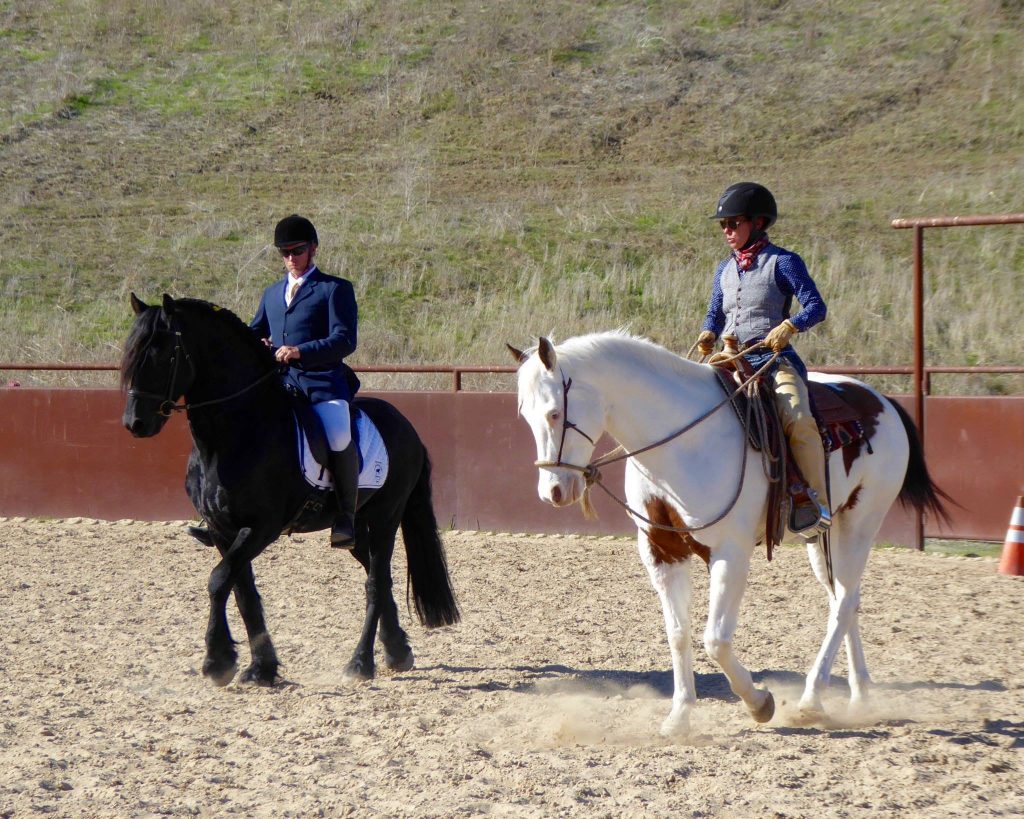
Lusitano and Iberian horse breeds are very commonly seen participating in Working Equitation, however Quarter Horses, Arabians, Warmbloods, and Percheron crosses were all competing at this local show.
Pence Ranch Winery and Vineyard and Equestrian Facility
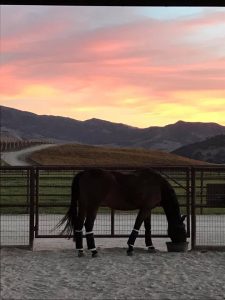
The setting for this fun competition was beautiful and new. Nicole and her husband Brad Price run Pence Ranch equestrian facility. It is beautifully situated on 200 acres surrounded by a vineyard known for producing award-winning wines in the hills of Buellton, CA
Nicole fills us in on the details, “The facility houses our training program where we train horses for various disciples – I specialize in Working Equitation, Dressage, Western Dressage and am also a Judge. My husband’s background as a cattleman and cutting trainer have built his focus on building all around ranch type horses that have solid foundations to go into many of the western disciplines and gives my Sporthorses something else to do besides arena training. We offer rehab services in conjunction with professional veterinarians and other practitioners.
The facility offers a beautiful 225 x 150 covered arena, outdoor arena, round pen, gorgeous barns, irrigated grass and sand turnouts and trails.
We will be hosting clinics throughout the year and plan to host some more small shows and ranch horse/cattle sorting events in the future.”
Interested in Working Equitation as a Participant or Spectator?
Come check out the action at the upcoming schooling show on March 31, 2018 at Golden Hills Farms in Paso Robles.
Get out and enjoy a new challenge, Working Equitation, using skills and training you probably already have. Get ready to make new friends and enjoy a new riding adventure.
Cover photos credit: Laurel Renz

